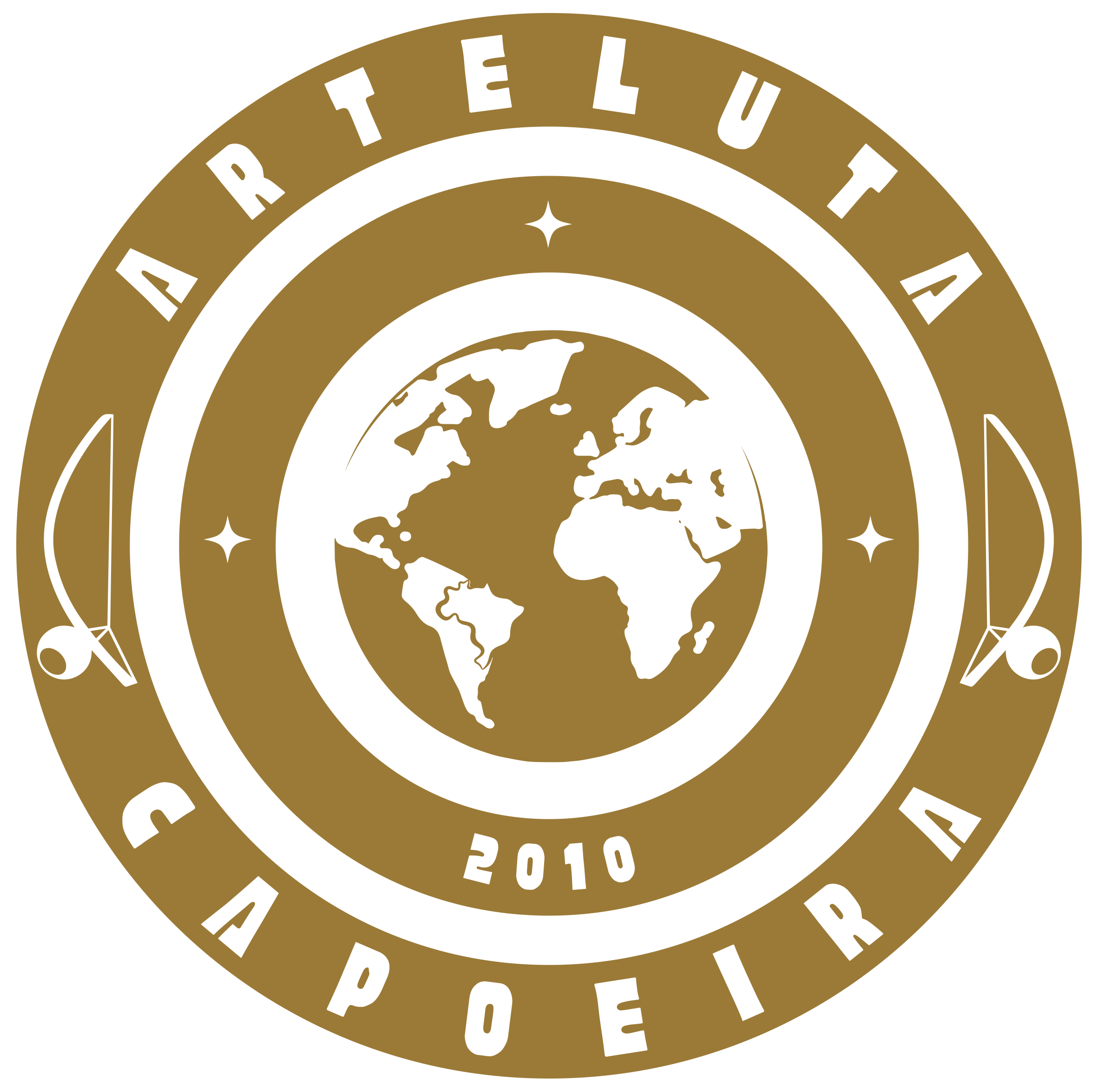Capoeira is a rich cultural experience. It is often characterized by its unique mix of dance and acrobatics combined with the attack and defense elements of traditional martial arts. The live music, singing, clapping and playfulness of the dance is used to disguise the fight.
Many researchers accept the theory that capoeira was developed by Africans in the senzalas (slave quarters) and plantations of Brazil during the colonial era as a form of resistance against slavery. Being from different tribes, with different languages and cultural traditions, the Africans found a common language through body language, like dance, and music, like drumming and singing. They began to adapt and develop new cultural expressions of dance and music, even martial arts, perhaps an early form of capoeira, and religious practices. All these things became their tools to give them a sense of community in the senzalas, and the strength to escape into the surrounding forests, perhaps with the aid of the native Indigenous peoples, where they created hidden villages called quilombos.
 Quilombos were safe havens for as many as 30,000 Africans and Indians, as well as a few renegade Europeans. The biggest quilombo was called Quilombo dos Palmares (1605-1694). It remained resilient and protected for almost 100 years. After it was destroyed by Portuguese forces, many of the Africans were resold and relocated to the more urban cities of Bahia and Rio de Janeiro where abundant repression of African cultural expressions and manifestations ensued.
Quilombos were safe havens for as many as 30,000 Africans and Indians, as well as a few renegade Europeans. The biggest quilombo was called Quilombo dos Palmares (1605-1694). It remained resilient and protected for almost 100 years. After it was destroyed by Portuguese forces, many of the Africans were resold and relocated to the more urban cities of Bahia and Rio de Janeiro where abundant repression of African cultural expressions and manifestations ensued.
Then, in 1888, the Princess Isabel, who ruled Brazil, finally signed the decree to free all slaves, but life remained extremely difficult for the African people and their children. After the abolition of slavery, capoeira continued to be practiced in the streets and by 1890 it was declared illegal, along with all African cultural manifestations. Capoeira was illegal and punishable by arrest, or often times, torture.
In some areas, capoeira developed into a dangerous street fight and in others, a folkloric dance and tourist attraction. Little by little, capoeira began losing its quality, characteristics and value.
In the 1930s, in order to prevent capoeira from disappearing, Mestre Bimba (1899/1900-1974) decided to take capoeira from the streets and into its first academy. Although the practice of capoeira was no longer officially illegal, it remained heavily repressed, so Mestre Bimba called his capoeira something different: Luta Regional Baiana (Regional Bahian fight). He created a teaching methodology that revitalized old movements but also created new ones. He taught students of all races, genders and classes not only how to be strong fighters, but also respectful citizens.
In 1942, Mestre Pastinha (1889 – 1981) opened the first Angola school which he called the Centro Esportivo de Capoeira Angola. In light of Mestre Bimba’s newly defined Capoeira Regional, Mestre Pastinha, and others, opted to define and preserve the old way of learning capoeira. Mestre Pastinha is known as the father of Capoeira Angola because of his poetic philosophy, his passion for the art of capoeira and unwavering determination despite constant struggle with local authorities.
In 1953, upon seeing a performance of capoeira by Mestre Bimba and his students, Brazilian President Getúlio Vargas declared that the martial art was indeed a cultural relic, thus ending its illegal status and persecution.
Mestre Bimba, creator of Capoeira Regional, due to his courage, vision and sacrifice, successfully saved capoeira from extinction and made it possible for it to be practiced in over 80 countries with more than 120 million practitioners around the world. He said, “I didn’t make capoeira for me, I made capoeira for the world.”
By the early 1960’s, a modern capoeira emerged, influenced by both capoeira regional and capoeira angola, fusing them into the popular contemporary style we see today.
Recommended readings
Almeida, Bira. Capoeira: A Brazilian Art Form, 2nd Ed. North Atlantic Books, 1993.
Capoeira, Nestor. The Little Capoeira Book. Alex Ladd, Trans. Berkeley: North Atlantic, 2003.
Filhos de Bimba Escola de Capoeira website. http://www.filhosdebimba.com.br/
Mann, Charles C. and Susanna Hecht. “Where Slaves Ruled,” National Geographic Magazine. April 2012. http://ngm.nationalgeographic.com/2012/04/maroon-people/mann-hecht-text/1



